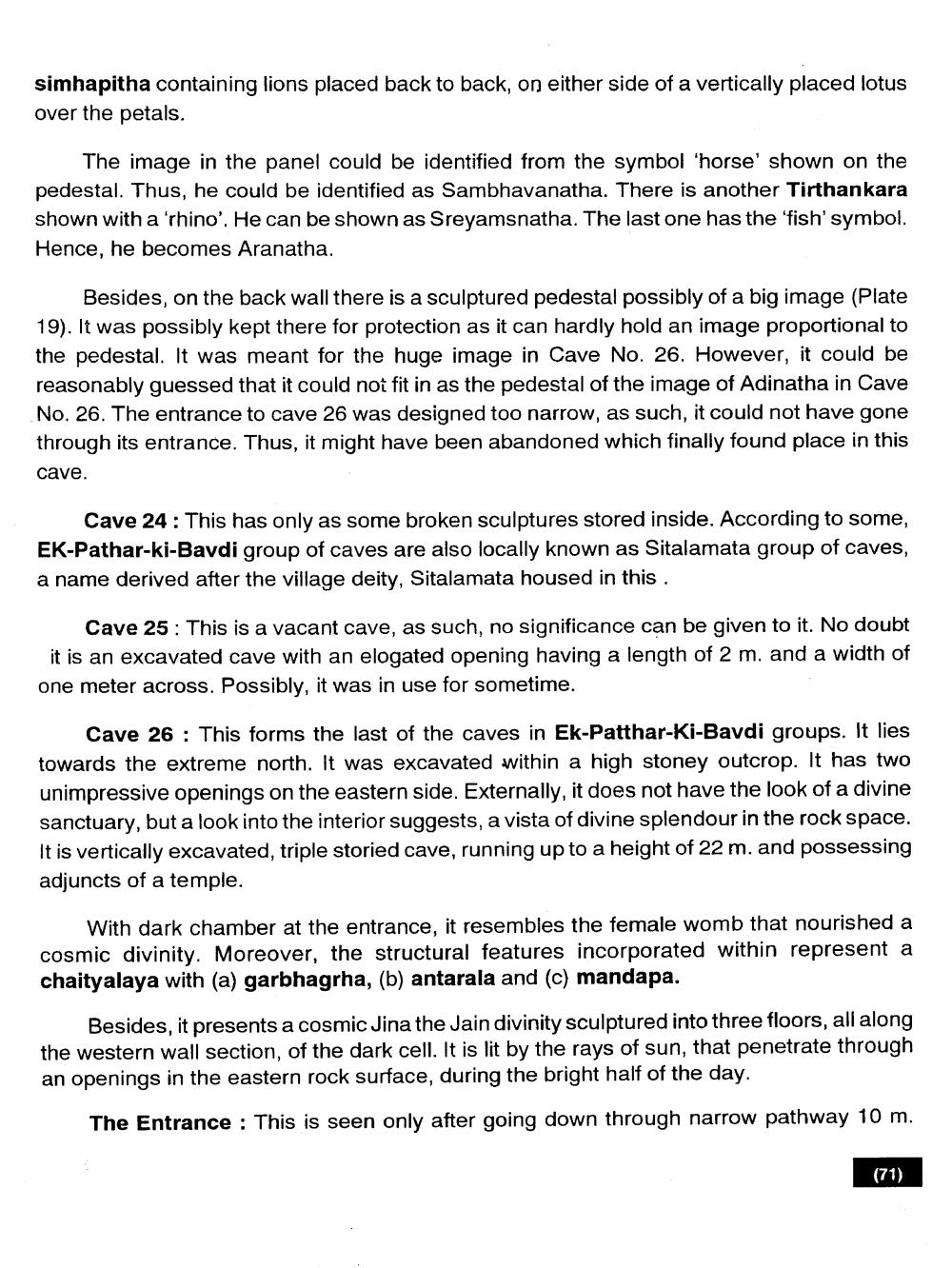________________
simhapitha containing lions placed back to back, on either side of a vertically placed lotus over the petals.
The image in the panel could be identified from the symbol 'horse' shown on the pedestal. Thus, he could be identified as Sambhavanatha. There is another Tirthankara shown with a 'rhino'. He can be shown as Sreyamsnatha. The last one has the 'fish' symbol. Hence, he becomes Aranatha.
Besides, on the back wall there is a sculptured pedestal possibly of a big image (Plate 19). It was possibly kept there for protection as it can hardly hold an image proportional to the pedestal. It was meant for the huge image in Cave No. 26. However, it could be reasonably guessed that it could not fit in as the pedestal of the image of Adinatha in Cave No. 26. The entrance to cave 26 was designed too narrow, as such, it could not have gone through its entrance. Thus, it might have been abandoned which finally found place in this cave.
Cave 24: This has only as some broken sculptures stored inside. According to some, EK-Pathar-ki-Bavdi group of caves are also locally known as Sitalamata group of caves, a name derived after the village deity, Sitalamata housed in this.
Cave 25: This is a vacant cave, as such, no significance can be given to it. No doubt it is an excavated cave with an elogated opening having a length of 2 m. and a width of one meter across. Possibly, it was in use for sometime.
Cave 26 This forms the last of the caves in Ek-Patthar-Ki-Bavdi groups. It lies towards the extreme north. It was excavated within a high stoney outcrop. It has two unimpressive openings on the eastern side. Externally, it does not have the look of a divine sanctuary, but a look into the interior suggests, a vista of divine splendour in the rock space. It is vertically excavated, triple storied cave, running up to a height of 22 m. and possessing adjuncts of a temple.
With dark chamber at the entrance, it resembles the female womb that nourished a cosmic divinity. Moreover, the structural features incorporated within represent a chaityalaya with (a) garbhagrha, (b) antarala and (c) mandapa.
Besides, it presents a cosmic Jina the Jain divinity sculptured into three floors, all along the western wall section, of the dark cell. It is lit by the rays of sun, that penetrate through. an openings in the eastern rock surface, during the bright half of the day.
The Entrance: This is seen only after going down through narrow pathway 10 m.
(71)




